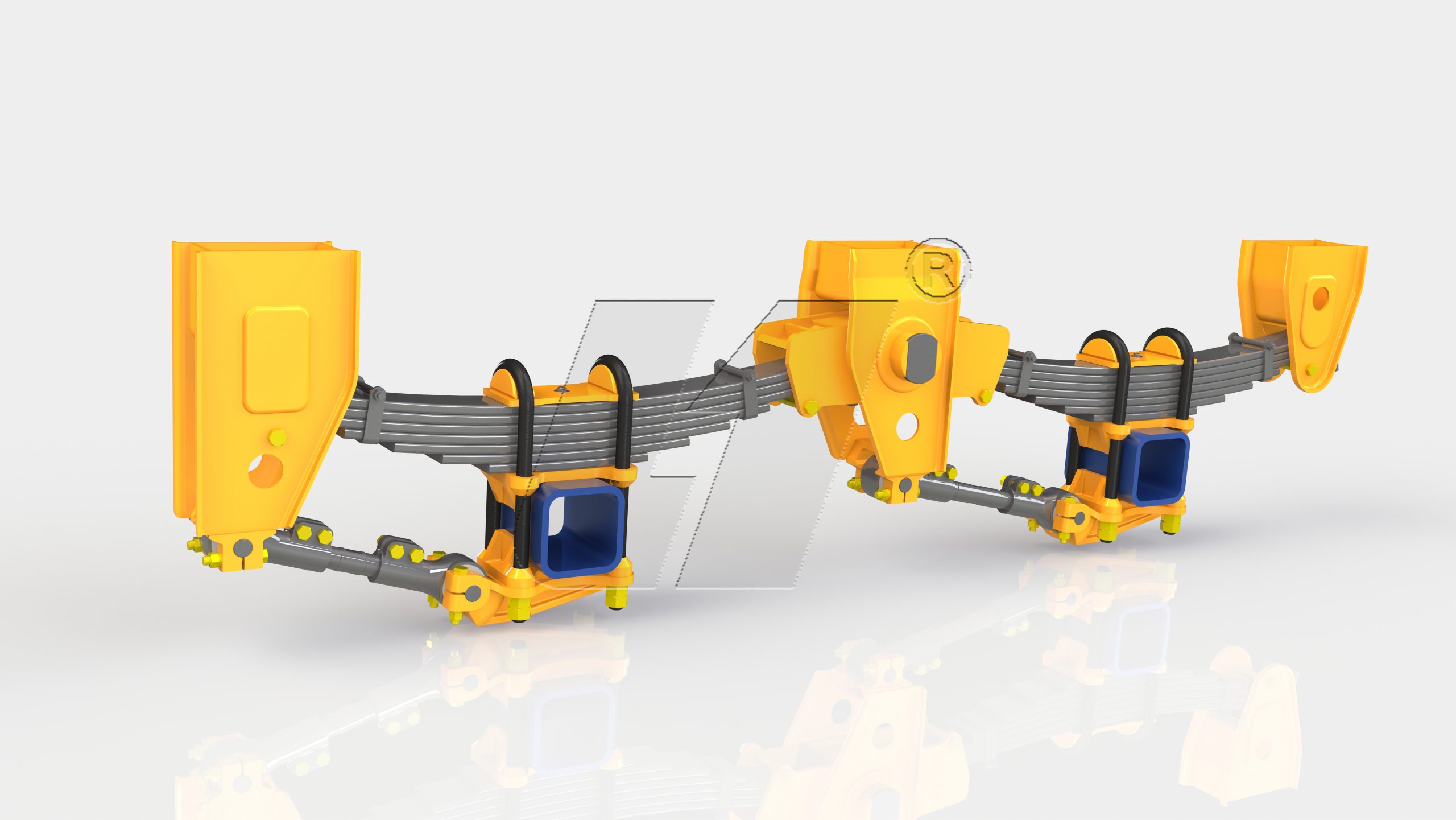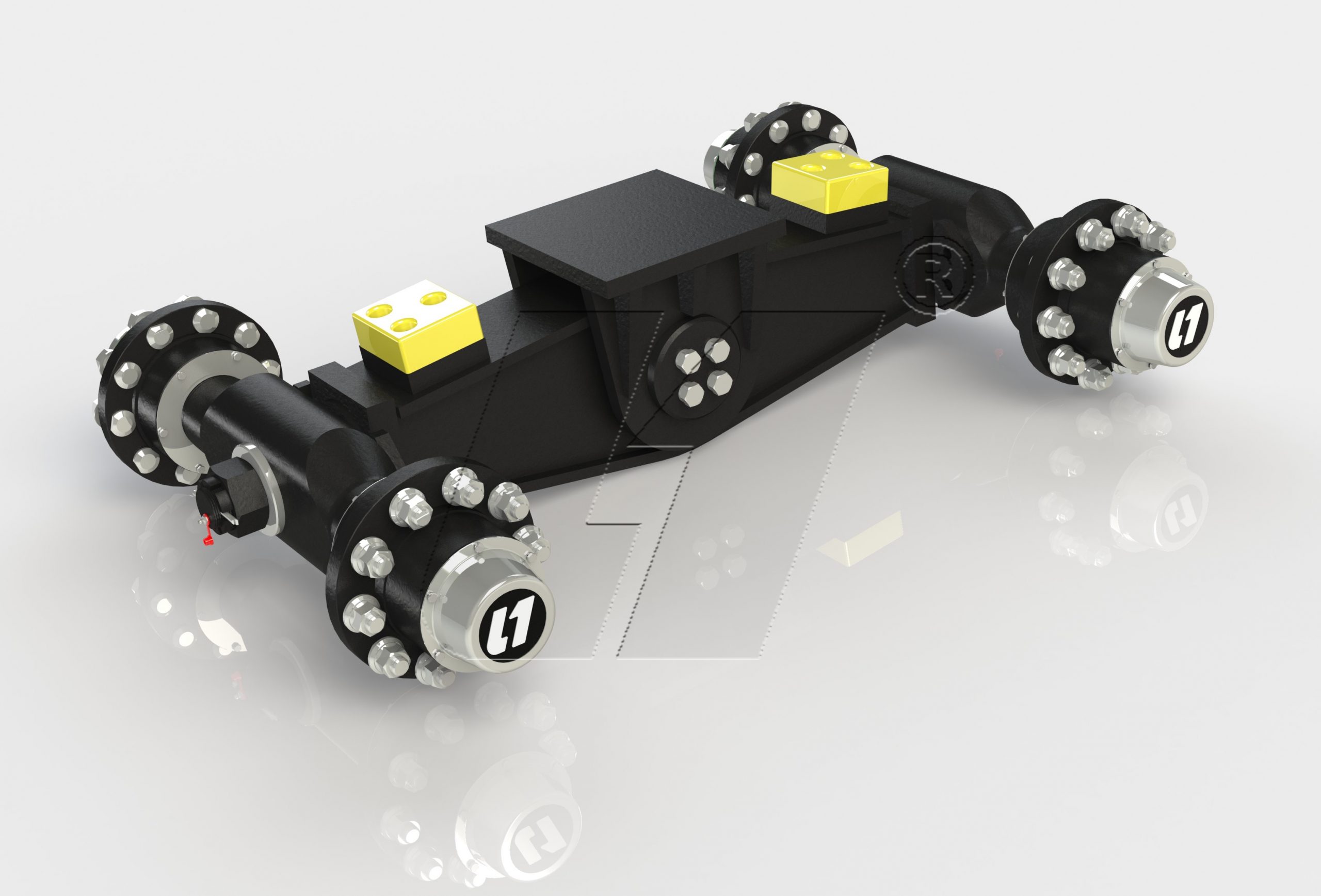How Do I Check My Suspension Problem?
Checking for suspension problems in a vehicle is crucial for ensuring a safe and smooth ride. Here’s a step-by-step guide to help you identify potential suspension issues:
1. Visual Inspection:
Tire Wear: Uneven tire wear can be an indicator of suspension problems. Check for excessive wear on one side of the tire, which may suggest misalignment or suspension issues.
Leaking Shock Absorbers: Inspect the shock absorbers for any signs of oil leakage. If you notice damp or oily residue on the shocks, they may be failing and need replacement.
Suspension Components: Look for damaged or worn-out components, including bushings, springs, torque arm, and more. Any visible damage may indicate a problem with the suspension system.

Beam Type Air Suspension
2. Bounce Test:
Park your vehicle on a level surface.
Push down on each corner of the car and release. The car should bounce back and settle in one or two bounces.
If the car continues to bounce excessively or if you hear creaking noises, it could indicate worn-out shocks or struts.
3. Listen for Unusual Noises:
Pay attention to any unusual noises while driving, such as clunking, banging, or creaking sounds. These may indicate issues with suspension components or worn-out bushings.

Mechanical Suspension for Agricultural
4. Steering Responsiveness:
Test the steering responsiveness by turning the wheel left and right while the vehicle is stationary and then moving slowly. Any delays, stiffness, or unusual noises may point to problems with the suspension or steering components.
5. Uneven Vehicle Height:
Park your car on a flat surface and visually inspect its height. Uneven height between different sides of the vehicle may indicate a suspension issue. This can be observed by measuring the distance between the wheel arch and the center of the wheel on each corner.
6. Drive Test:
Take your vehicle for a test drive on various road surfaces, including bumpy roads and smooth highways.
Pay attention to how the car handles. If you experience excessive bouncing, vibrations, or a rough ride, it could signal problems with the suspension system.

Heavey Duty Rigid Suspention For Truck
7. Check Wheel Alignment:
Misaligned wheels can result in uneven tire wear and handling issues. If your vehicle tends to pull to one side, or if the steering wheel is off-center when driving straight, it may indicate the need for a wheel alignment.
8. Professional Inspection:
If you are unable to identify the issue or if you suspect a serious problem, it’s advisable to have your vehicle inspected by a qualified mechanic or an automotive professional. They can use specialized tools and expertise to diagnose and repair suspension issues accurately.
Regular maintenance and prompt identification of suspension problems are essential for the overall safety and performance of your vehicle. If you notice any abnormalities during your inspections or while driving, it’s recommended to seek professional assistance to address and resolve suspension issues promptly.
No matter which solution you’re partial to, Yonglitai Suspensions will ensure you have the perfect truck or trailer suspension solution for your needs! That’s what sets us apart; We listen to your needs, and then engineer the proper suspension around those needs.


